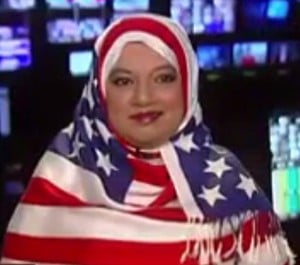The Swiss federal government gives a lot of leeway to cantons, cities and even schools and professional associations (for those of you who remember the Sura al Shawk case, where the original decision of basketball association, Probasket, was allowed to stand by the courts) to decide their hijab policies on a case-by-case basis.
So despite having a nationwide minaret ban (which isn’t as much about Islam as it appears on the surface), unlike in France, there is no national headscarf “law” in Switzerland. Here we have no “headscarf affairs” gripping the national consciousness, although some local cases do make the news in the different language regions. When courts intervene, it can be a mixed bag (Basel swimming case, for example) and the legal positions taken on headscarves, while infrequent, have been inconsistent. Last year saw a burka ban in the Italian part of Switzerland, but this ban did not include headscarves.
That said, recently, two cases have given me hope for Switzerland allowing common sense to prevail.
Earlier this fall, the northern Swiss canton of Thurgau put an end (for right now) to a complex, ongoing debate on headscarves in schools. In 2012, an original ban was overturned, the cantonal courts deciding there was insufficient legal basis to enforce one, and this reversal was held up by the Swiss Supreme Court. In an attempt to create a legal basis for its position, the Swiss People’s Party had introduced a motion going farther than school dress codes to single out headscarves. This motion was overturned in September by the cantonal parliament.
![[Source].](https://wp-media.patheos.com/blogs/sites/92/2014/11/switzerland-300x215.jpg)
The only cloud on the horizon is in the canton of Valais, where the Swiss People’s Party is collecting signatures for a proposed referendum. Given that this is the homeland of Oskar Freysinger, one of the main initiators of the minaret ban, I am worried about the chances of a successful headscarf ban there.
Switzerland is a strange place. While people are personally quite conservative, there is this attitude of “do what you want as long as you pay your bills and don’t make noise” that I like, which is also what probably leads to the inconsistency of a country banning minarets nationally, but allowing headscarves on a case-by-case and local basis. As I am coming up on my eleventh year in Switzerland and remember how disappointed I was at the minaret ban, I am happy to see my adopted country take a reasoned approach to a delicate situation. The education of women and girls is important, and allowing headscarves in schools, or at least adopting a wait and see approach, means that these women and girls stay in school that much longer, especially given that in Switzerland, headscarves are currently allowed at the universities (which is also the case in France generally, but as girls can’t go to high school in headscarves…). I am also encouraged by the fact that there has been no blanket hijab ban yet. For example, in the canton of Thurgau, the feeling of the courts and the cantonal parliament, was that it was up to schools to define dress codes, and there is a legal basis for defining dress codes. Indeed, as part of the dress code, schools do have the right to judge hijab on a case-by-case basis, but this stops short of a headscarf ban. As such, the cantonal parliament rejected the motion based on it singling out Muslims, which for me is an uplifting sign. What will happen next? I’m not really sure, but I hope to have some good updates in the coming months for our readers.













